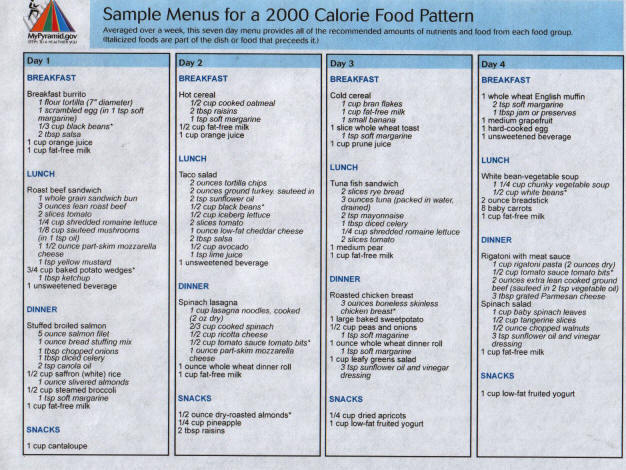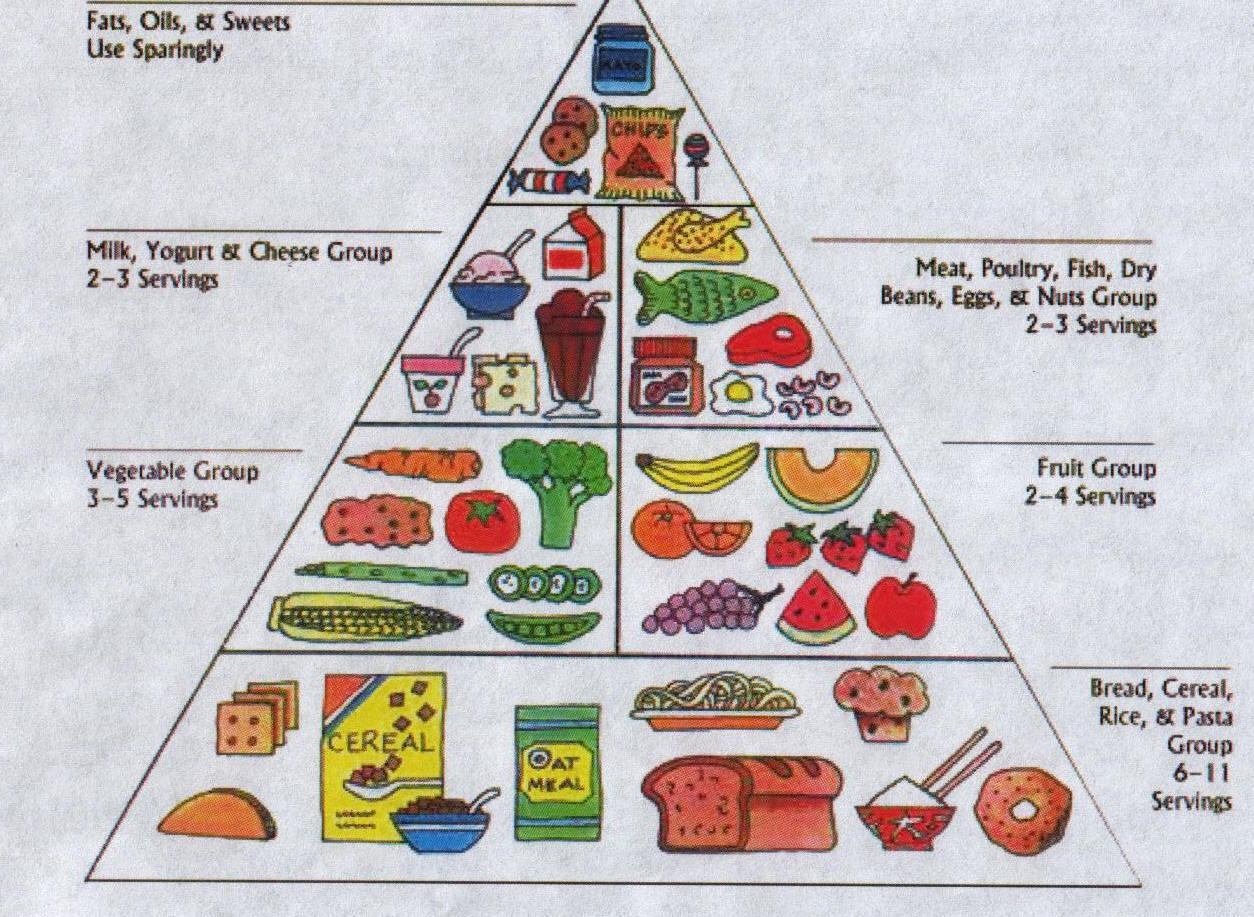Good
Foods for Good Health
Dean Brooks
Intermediate ESL

Introduction| Task|Process| Resources| Evaluation| Conclusion| Teacher Notes| Additional
Which foods are good? What is the best way to buy food? Can you plan healthy meals?
- Find good food ideas in class or on line. Look at the resources below.
- Use these ideas to plan meals.
- Plan to shop after you plan the meals.
- Write what you have learned about food.
- Write your menus and write your plan to shop.
- Guess how much your food will cost. Later you can see if you are right. And you can see if a plan will save money.
- Learn about food online. http://www.mypyramid.gov/pyramid/index.html or http://www.mypyramid.gov/sp-index.html (Spanish). Talk about what you learned in class.
- Write:
- What is a good grain?
- What is a good vegetable?
- What is a fruit?
- What is in the oil group?
- What is in the milk group?
- What is in the meat and bean group?
- Find out how much you should eat. How much in one day? How much in one meal? How much from each of three food groups. http://www.nutritionexplorations.org/kids/nutrition-howmuch.asp
- Plan some meals http://www.mypyramidtracker.gov/planner/launchPage.aspx http://www.mypyramid.gov/downloads/sample_menu.pdf
- List the food and how much you need to buy. You may use the handout "Menu Plan" as a guide.
- Check ads in the newspaper, or check on line
or visit a store and take notes.
- Write a report on what you learn about nutrition (see Process #2 and #3 above).
- Write a short menu for each meal. Use the daily nutrition ideas you learned. List what food you will need and how much. What it will cost? Does it cost what you guessed it would? (See Process #1 and #7 above.)
- Handout "Menu Plan" -- to help organize ideas and write menus.
- Find grocery ads and coupons in the news or at a store. Bring them to class.
- Sample USDA suggested menu can be used for class discussion: http://www.mypyramid.gov/downloads/sample_menu.pdf
- USDA suggested food pyramid can be used for class discussion: http://www.mypyramid.gov/pyramid/index.html
- Suggested format for a day's menu
Meals
Day1
Course 1
Course 2
Course 3
Course 4
Course 5
Course 6
Total cost
1
Breakfast
Eggs
Bread, jam, butter
Fruit juice
Milk
Tea
Quantity
6
¼ loaf
16 ounces
30 ounces
16 ounces
Cost
$1
$1
$.80
$.50
$.20
$3.50
2
Lunch
Quantity
Cost
3
Supper/Dinner
Quantity
Cost
Sample Menus

Food Pyramid
